Reviving a Rusted Relic of the World’s Fair in Queens
The New York State Pavilion in Flushing Meadows-Corona Park is currently vacant, a lock on its gate allowing only a glimpse of the decayed interior of Philip Johnson's futuristic "Tent of Tomorrow," designed for the 1964 World's Fair.

The New York State Pavilion in Flushing Meadows-Corona Park is currently vacant, a lock on its gate allowing only a glimpse of the decayed interior of Philip Johnson’s futuristic “Tent of Tomorrow,” designed for the 1964 World’s Fair. For their first prize entry in the New York State Pavilion Ideas Competition, Aidan Doyle and Sarah Wan reimagined the structure as platform for a soaring “Hanging Meadows” garden, which would offer vistas over New York City from its lush interior.
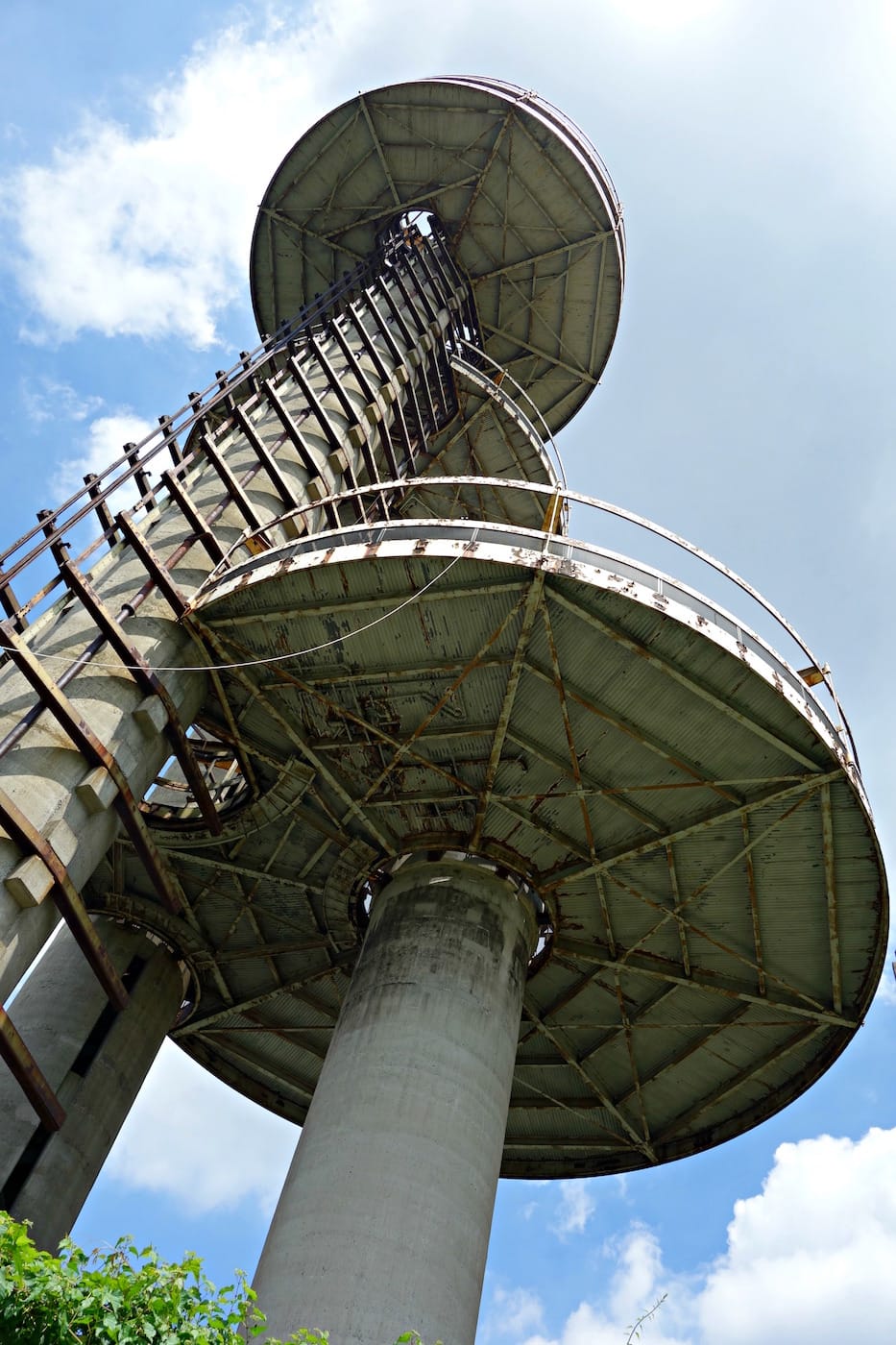
The concept is presented along with other winners in Pavilion Futures: The New York State Pavilion Ideas Competition at the Queens Museum, which is just around the corner from the Pavilion. Launched earlier this year by the National Trust for Historic Preservation and People for the Pavilion, the competition was an open call for ideas on the future of the site. The month-long popup show is a simple installation with images of the entries pinned on the wall, alongside a clip from Matthew Silva’s Modern Ruin: A World’s Fair Pavilion documentary, but is designed to sustain enthusiasm for reusing the abandoned building.
“Our ideas competition was put together as an anything goes approach to imagining what the building can be,” Jason Clement, director of community campaigns for the National Trust and the competition’s project manager, told Hyperallergic. “The Pavilion has been many things over the years. What we wanted to show with the ideas competition was even if the ideas are farfetched, this building is a blank canvas and can literally become anything.”
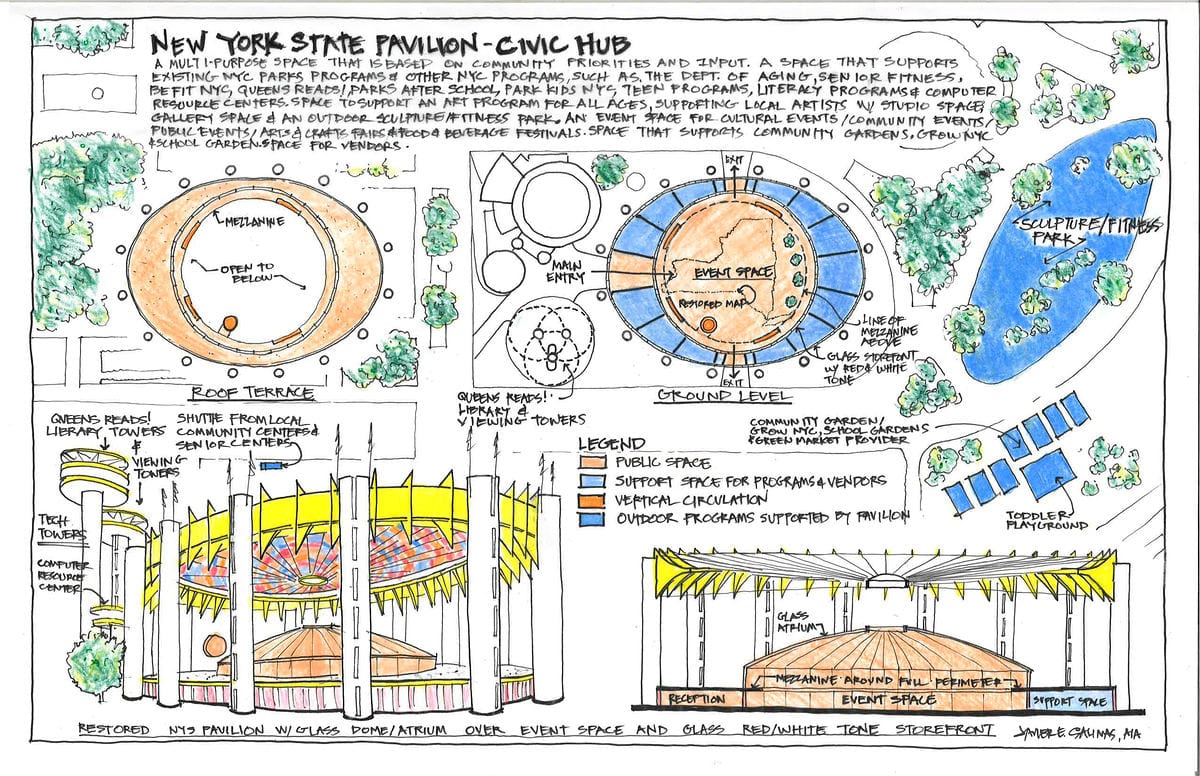
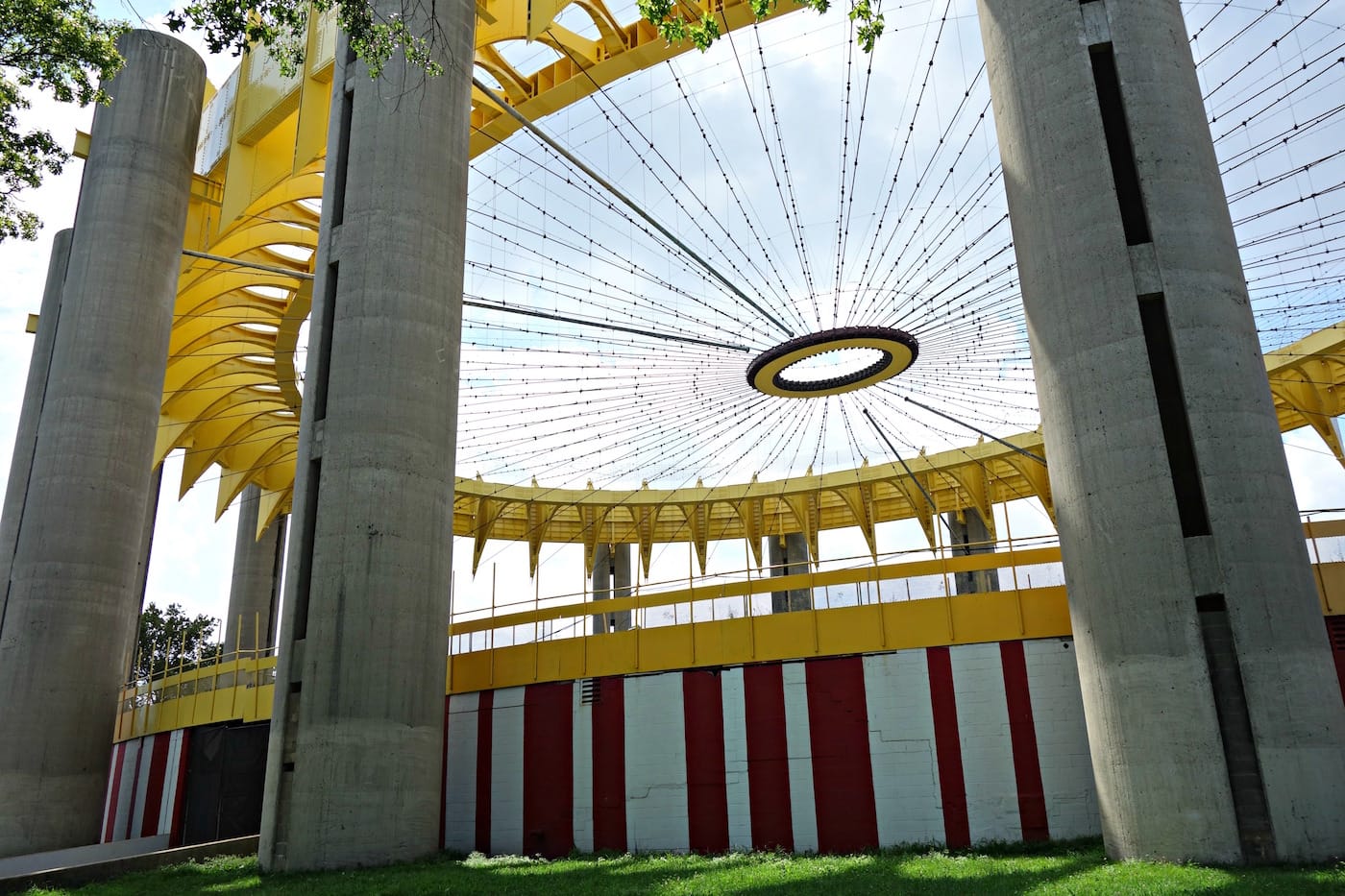
Clement noted that Queens Borough President Melinda Katz has already helped raise $12 million towards the Pavilion’s restoration, with work already underway. While the Pavilion is far from hidden, looming over the Queens park and visible from the nearby highway, it has basically been left to deteriorate for five decades with intermittent use as a concert venue and roller skating rink. The mosaic road map on its floor has crumbled, and the multicolored transparent panels on its roof were removed when they became a hazard. Attention to its preservation has recently increased, with the Pavilion opening to the public for the first time in 27 years in 2014 (see Hyperallergic’s coverage here).
Even the extreme ideas among the competition entries emphasize the Pavilion as a community hub, whether an “Out of Gravity Museum,” a giant timepiece, a carousel, a UFO landing pad, or a refugee center. The second prize by Javier Salinas proposes a multi-purpose space for public programming, while the third prize by Rishi Kejrewal and Shaurya Sharma illustrates a cultural marketplace with play areas and solar panels. The “Queens Winner” created by locals Cesar Juarez and Alida Rose Delaney is a public park that stabilizes the original structure and adds stadium seating, while the fan favorite, by popular vote, by Houiji Ramzi transforms the Pavilion into a radiant “Tent of the Future” for capturing energy with solar power.
“We’re hoping that it continues the conversation and the move to raise money for the restoration,” Clement said of the competition. “All along one of our goals was to show that people love this building, all around the world.”



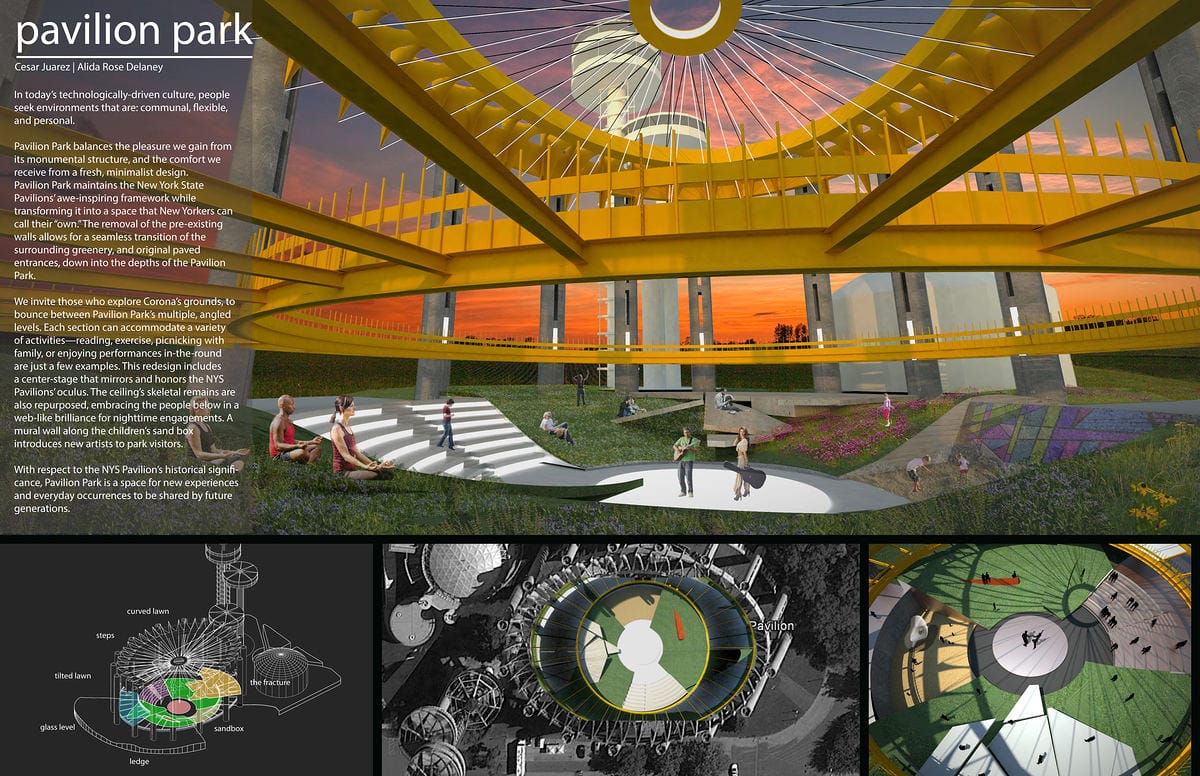

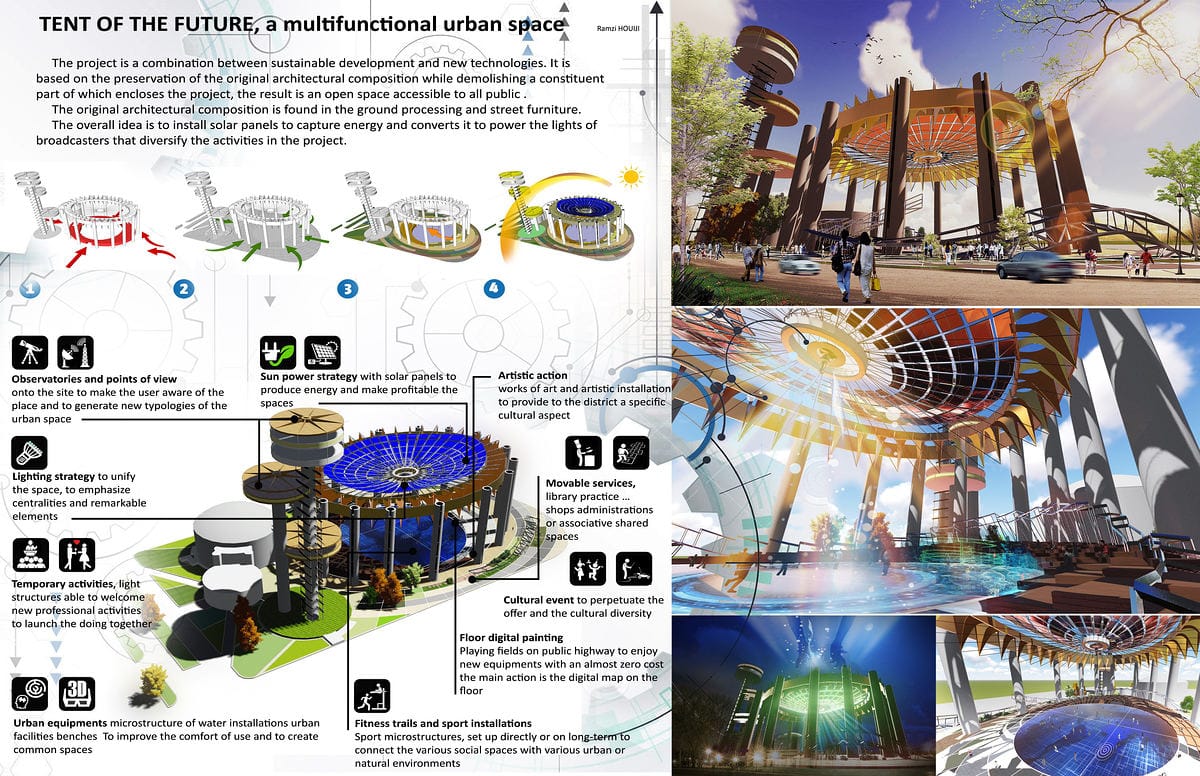

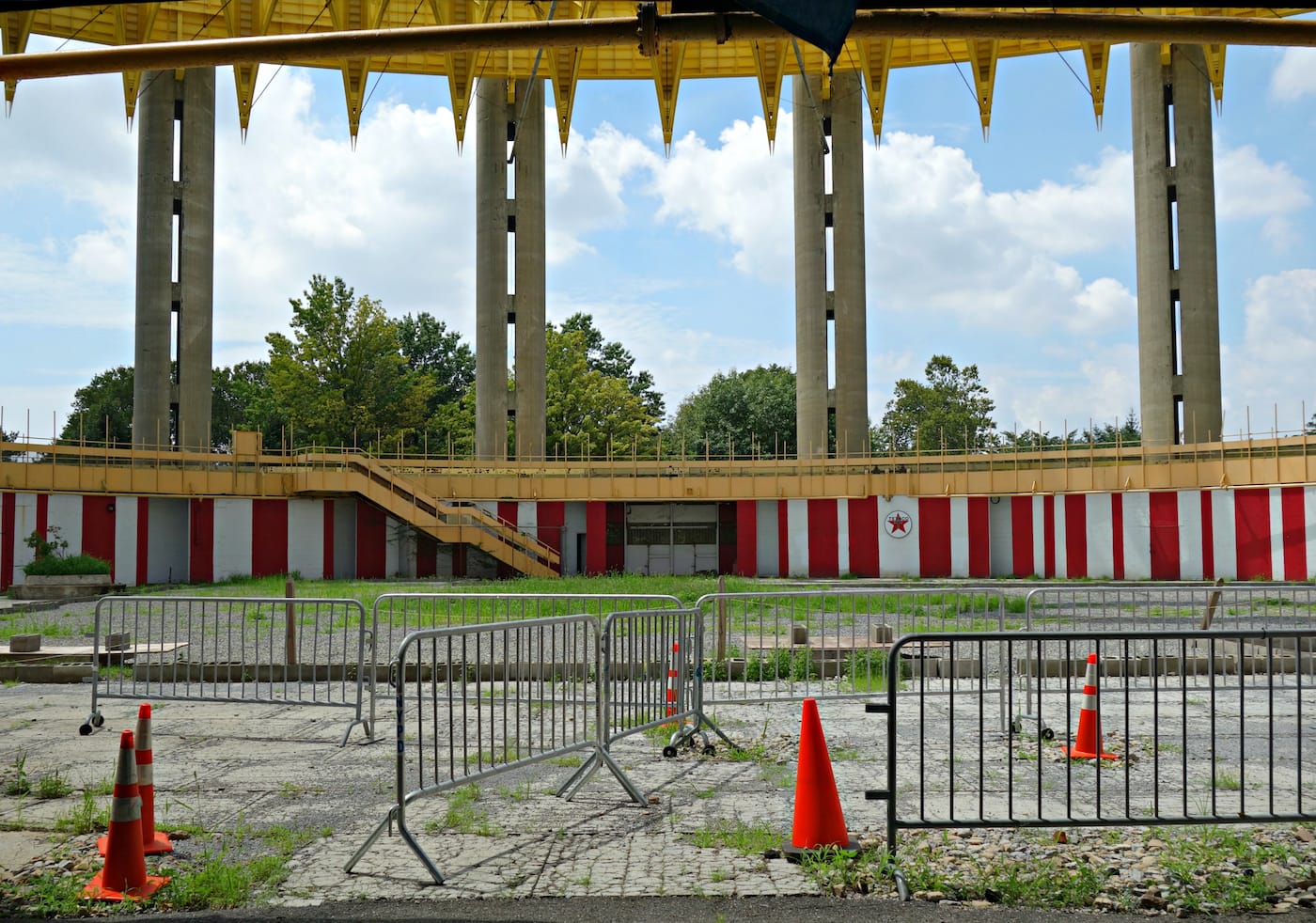
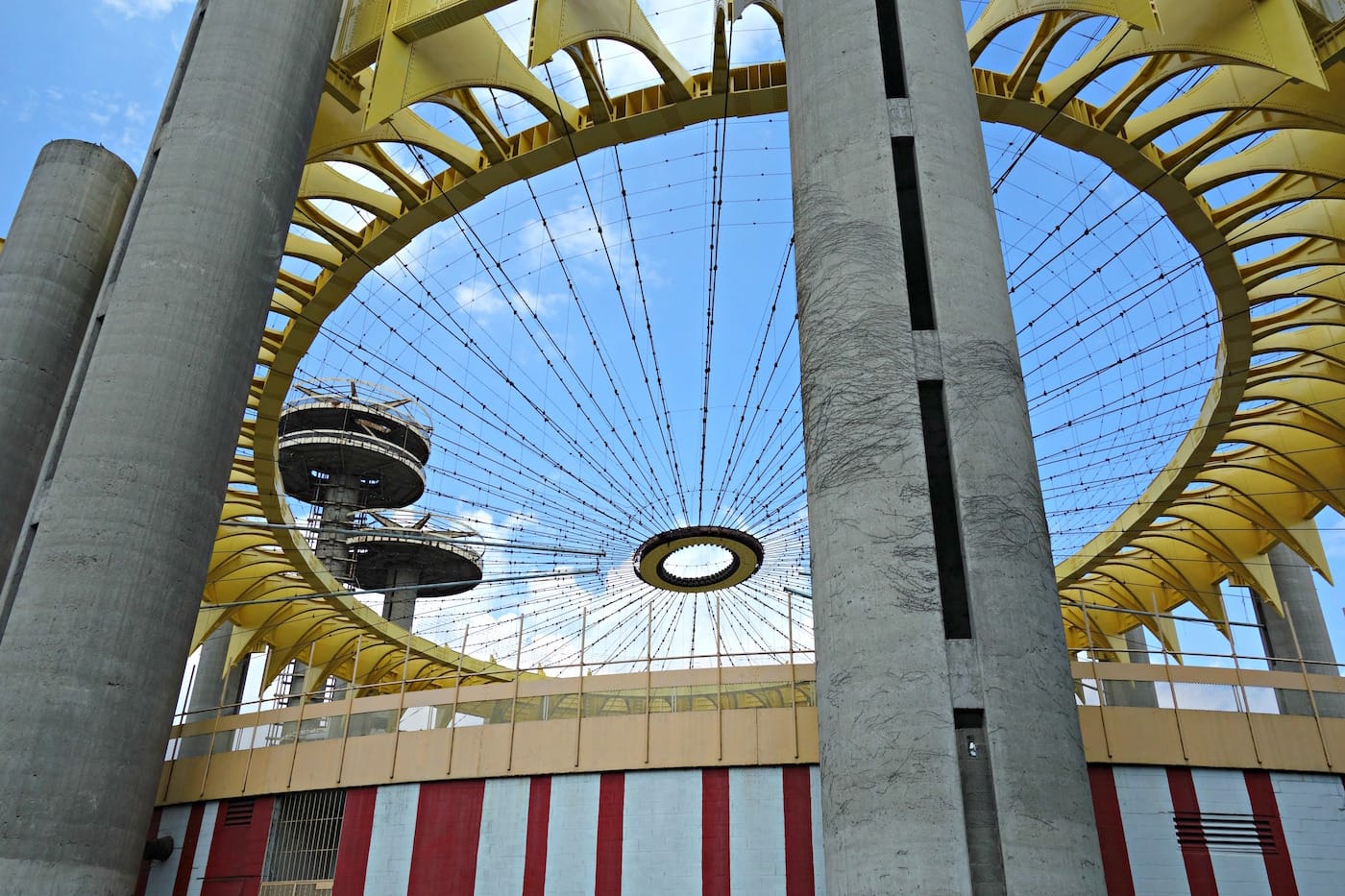

Pavilion Futures: The New York State Pavilion Ideas Competition continues through August 28 at the Queens Museum (New York City Building, Flushing Meadows-Corona Park, Queens).





